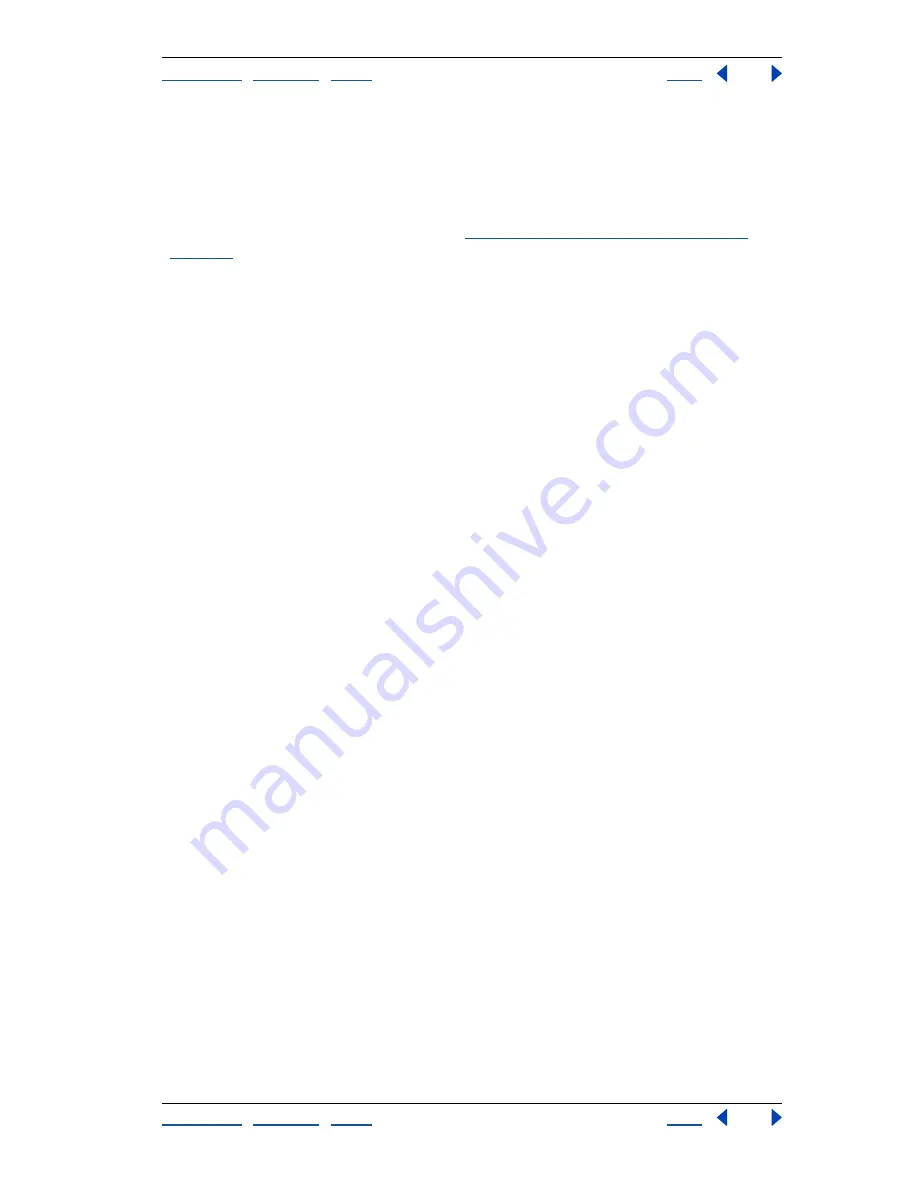
Using Help
|
Contents
|
Index
Back
207
Adobe Illustrator Help
Using Transparency, Gradients, and Patterns
Using Help
|
Contents
|
Index
Back
207
Constructing simple patterns and defining patterns
To create a pattern, you create artwork that you want to use as a pattern tile and then drag
it to the Swatches palette.
To create a pattern:
1
Create artwork for the pattern following
“Guidelines for constructing patterns” on
page 207
.
2
To make the pattern less complex so that it prints more rapidly, remove any unnec-
essary detail from the pattern artwork, and group objects that are painted with the same
color so that they are adjacent in the stacking order.
3
Optionally, to control the spacing between pattern elements or to clip out portions of
the pattern, draw a pattern bounding box (an unfilled rectangle) around the artwork you
want to use as a pattern. Choose Object > Arrange > Send to Back to make the rectangle
the backmost object. To use the rectangle as a bounding box for a brush or fill pattern, fill
and stroke it with None.
4
Use the selection tool to select the artwork and bounding box (if any) that will make up
the pattern tile.
5
Do one of the following:
•
Choose Edit > Define Pattern, and enter a name in the New Swatch dialog box.
•
Choose Window > Swatches (if necessary), and then drag the artwork to the Swatches
palette.
To name a pattern in the Swatches palette:
1
Double-click a pattern swatch.
2
Enter the new pattern name in the Swatch Name text box, and click OK.
Guidelines for constructing patterns
Follow these general guidelines for constructing pattern tiles:
•
As you create your pattern tile, zoom in on the artwork to align elements more
accurately, and then zoom out from the artwork for the final selection.
•
For greatest efficiency in previewing and printing, a fill pattern tile should be about
1/2 inch to 1 inch square. Side tiles for brush patterns should be no larger than 1/2 inch
to 1 inch high by 1 inch to 2 inches wide; the corner tiles must be the same height as
the side tiles and should be square.
•
The more complex the pattern, the smaller the selection used to create it should be;
however, the smaller the selection (and the pattern tile it creates), the more copies are
needed to create the pattern. Thus, a 1-inch-square tile is more efficient than a 1/4-inch-
square tile. If you are creating a simple pattern, you can include multiple copies of the
object within the selection intended for the pattern tile.
•
To create simple line patterns, layer stroked lines of varying widths and colors and place
an unfilled and unstroked bounding box behind the lines to create a pattern tile.
•
To make an organic or textural pattern appear irregular, vary the tile artwork subtly, not
dramatically, for a more realistic effect. You can use the Roughen filter in the Distort
menu to control variations.
•
To ensure smooth tiling, close paths before defining the pattern.






























